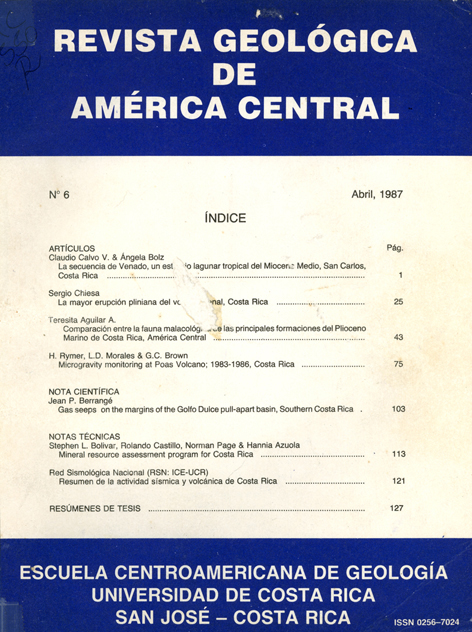Abstract
The Middle Miocene sedimentary sequence of Venado represents a semienclosed estuary with an external bioclastic sand bar, open to the Caribbean Sea.
The sequence is constituted by approximately 100m of sediments which correspond to two depositional systems:
a) lagoon or back barrier and b) carbonate sand bar. The first system is composed of tuffites, coquinas, fossiliferous sandstones and lenticular bioclastic carbonate. The second system is constituted of bioclastic sand bar and tidal channel deposits. The biogenic sands are composed of molusc and balanid debris.
Miorofacies criteria indicate interlittoral to sublittoral environments. Diagenetic criteria point to a temporal emersion. The paleocurrents directions of the tidal channels give transport directions mainly towards the southeast. Thus, bioclastic sand barrier had a NE-SW orientation. This Atlantic-type epicontinental tropical estuary was dominated by heavy fluvial volcaniclastic input. Freshwater influence is reflected by the paleoecology of the micro-fauna.






